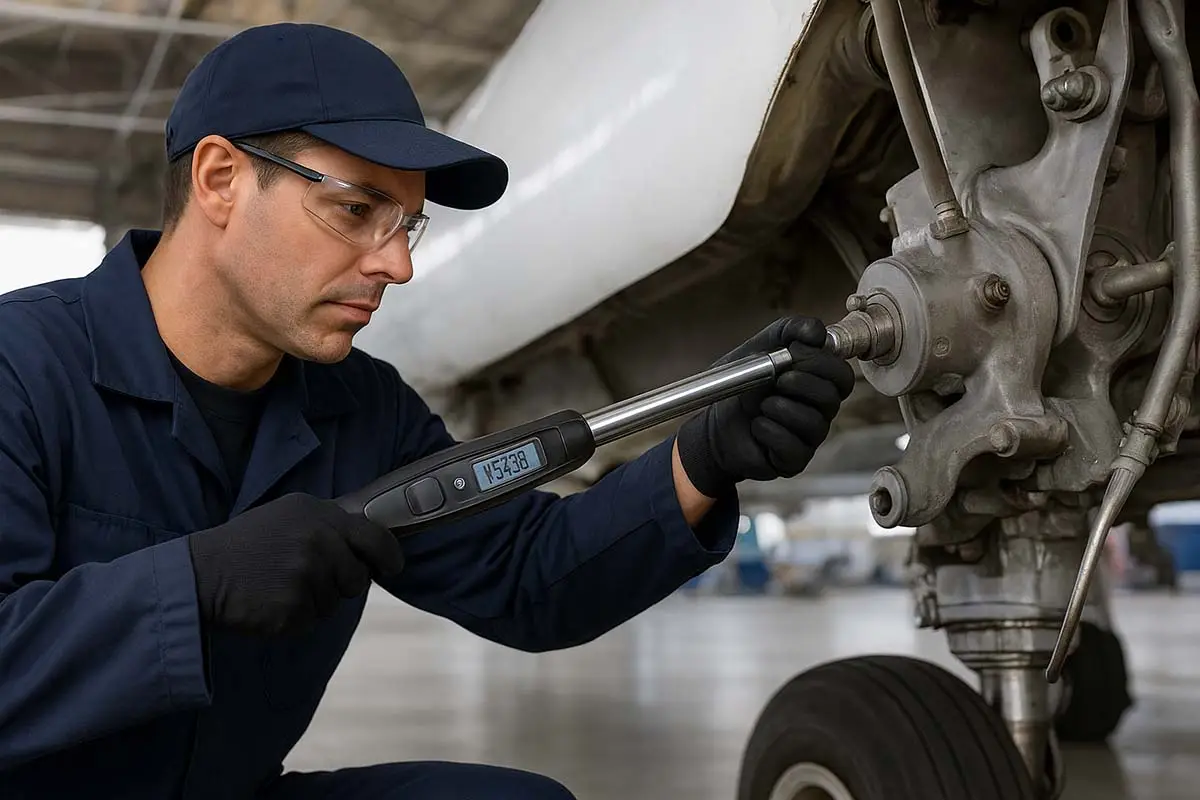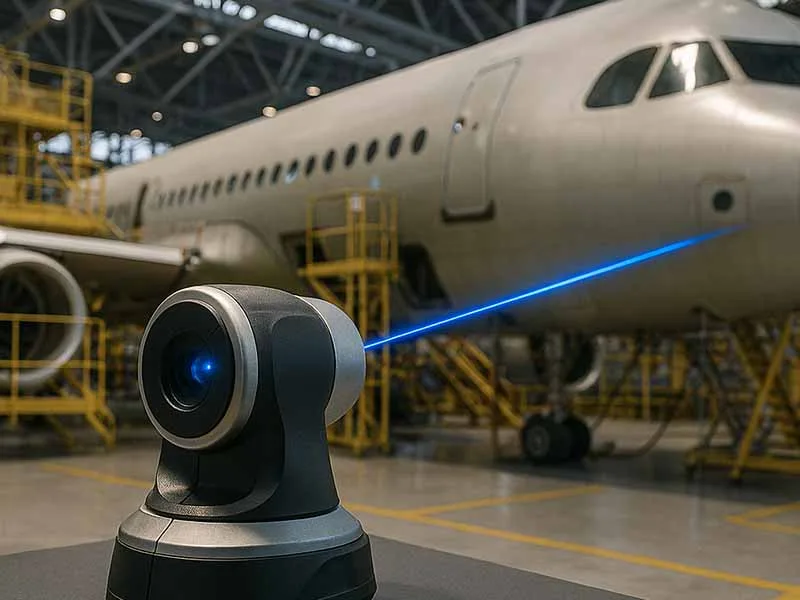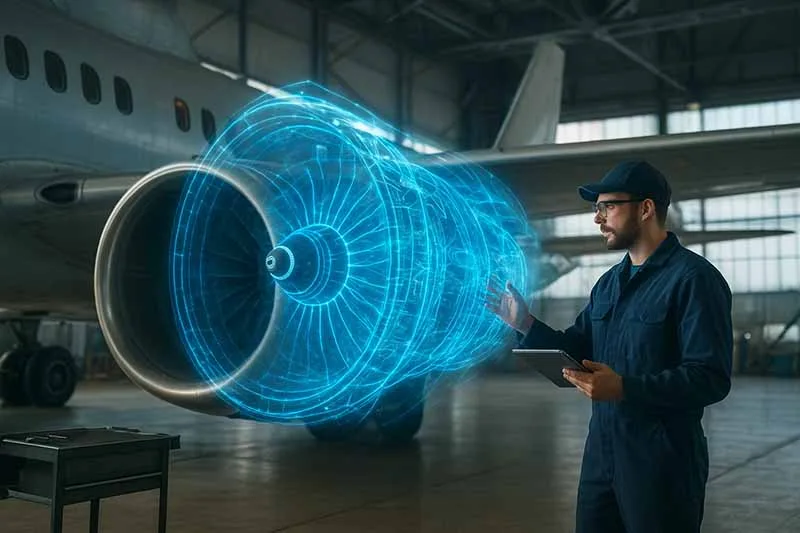Introduction – Why Torque Control Is Critical at 30,000 Feet
In aviation, precision isn’t a luxury — it’s the difference between safe flight and catastrophic failure. Every fastener, bolt, and nut on an aircraft plays a role in maintaining structural integrity and operational safety. A torque wrench ensures those fasteners are tightened to exact manufacturer specifications, avoiding both under-tightening (which can lead to loosening) and over-tightening (which can cause fatigue and cracking).
From jumbo jets to small private aircraft, torque wrenches are more than just tools — they are part of aviation’s frontline safety defense. In this article, we’ll look at real case studies that show just how critical they are.
Case Study 1 – Preventing Hydraulic System Failure in a Boeing 737
The Situation
During a routine maintenance check on a Boeing 737, engineers found that a hydraulic pump mounting bracket was loose. Investigation revealed that bolts were tightened below the manufacturer’s torque specification during a previous maintenance cycle.
The Torque Wrench Solution
Maintenance crews recalibrated their torque wrenches and re-torqued all hydraulic system bolts to Boeing’s specified 120 in-lb range. A digital torque wrench with an audible alert ensured exact tightening.
The Result
- Restored hydraulic pressure stability.
- Eliminated risk of in-flight hydraulic failure.
- Maintenance team adopted pre-use torque wrench calibration checks for all critical systems.
Case Study 2 – Avoiding Landing Gear Collapse on an Airbus A320
The Situation
During post-landing inspections, engineers noticed uneven wear on the Airbus A320’s landing gear retraction assembly. Analysis traced the cause to over-torqued fasteners on the actuator mounts, creating stress fractures.
The Torque Wrench Solution
Engineers used an electronic torque wrench with data logging to apply exact torque values per Airbus Maintenance Manual (AMM). Logged data was stored for compliance audits.
The Result
- Prevented potential landing gear collapse.
- Provided a clear maintenance compliance record for aviation regulators.
- Reduced component fatigue by eliminating excessive preload stress.
Case Study 3 – Helicopter Rotor Hub Safety
The Situation
In a Bell 412 helicopter, vibration levels increased beyond safe operating limits. The cause? Under-torqued bolts on the rotor hub assembly.
The Torque Wrench Solution
Maintenance teams used a calibrated click-type torque wrench to retighten bolts to Bell’s 480 ft-lb specification, using a star-pattern sequence for even load distribution.
The Result
- Restored smooth rotor operation.
- Reduced vibration-related wear on surrounding components.
- Highlighted the importance of torque sequence as well as torque value.
Why Torque Wrenches Are Non-Negotiable in Aviation
| Risk Without Proper Torque | Safety Benefit With Proper Torque |
|---|---|
| Loose fasteners causing component failure | Secure assemblies withstand operational stresses |
| Over-tightened bolts causing cracks or distortion | Components retain structural integrity |
| Inconsistent torque application between technicians | Standardized, repeatable tightening process |
| Lack of compliance documentation | Clear audit trail for regulators |
Key Takeaways from the Case Studies
- Calibration is king – A torque wrench is only as accurate as its last calibration.
- Follow OEM torque specs exactly – Even minor deviations can have major safety consequences.
- Use the right torque wrench for the job – Digital for data logging, click-type for simplicity, hydraulic multipliers for high-torque applications.
- Document everything – Aviation safety isn’t just about doing the work, but proving it was done correctly.
Lesser-Known Fact
In some aerospace facilities, torque wrenches are stored in climate-controlled tool cribs to avoid accuracy drift caused by temperature and humidity changes — a practice rarely seen in other industries.
Funny Fact
One aviation maintenance supervisor once joked, “If you think torque values don’t matter, try assembling an airplane like IKEA furniture — and then fly it.”
Want To Learn More About Torque Wrenches?
Find out more information on torque wrenches in the following articles:
- The Ultimate Guide to Torque Wrenches
- How to Use a Torque Wrench in the Automotive Industry
- Automotive Torque Wrench Buying Guide 2025
- Digital vs. Mechanical Torque Wrenches: Which Is Better?
- Best Digital Torque Wrench in 2025
- How to Calibrate a Torque Wrench: Step-by-Step Guide
- Top Torque Wrench Manufacturers Reviewed (2025 Edition)
- How to Set Up a Torque Wrench Correctly (Step‑by‑Step)
- How to Read a Torque Wrench Correctly?
- Torque Wrench Maintenance: How to Extend Its Life
- 5 Common Mistakes When Using a Torque Wrench
- The Future of Torque Wrenches: Smart Tools & Automation 2025
- Aerospace Fasteners: Precision, Weight & Vibration Resistance
- Torque Wrench Safety: Prevent Overtightening & Bolt Failures
- Torque Wrench Accuracy Explained | Understanding Tolerance in Practice
- Digital Torque Wrench Calibration – Step-by-Step Guide 2025
- Snap-On Digital Torque Wrenches (2025) – Premium Review
- Proto Torque Wrenches: Complete Buying Guide & Pro Review (2025 Edition)
- How to Choose the Right Torque Wrench for Your Job
Conclusion – The Right Torque Saves Lives
From small helicopters to massive commercial jets, torque control is one of the most overlooked yet vital safety factors in aviation. The case studies above prove that a properly calibrated torque wrench isn’t just a tool — it’s a safeguard against mechanical failure, regulatory headaches, and potentially life-threatening accidents.
What’s your experience with torque tools in aviation or other high-precision industries? Share your stories in the comments below — your insights could help another technician keep a machine (or an airplane) safe.





